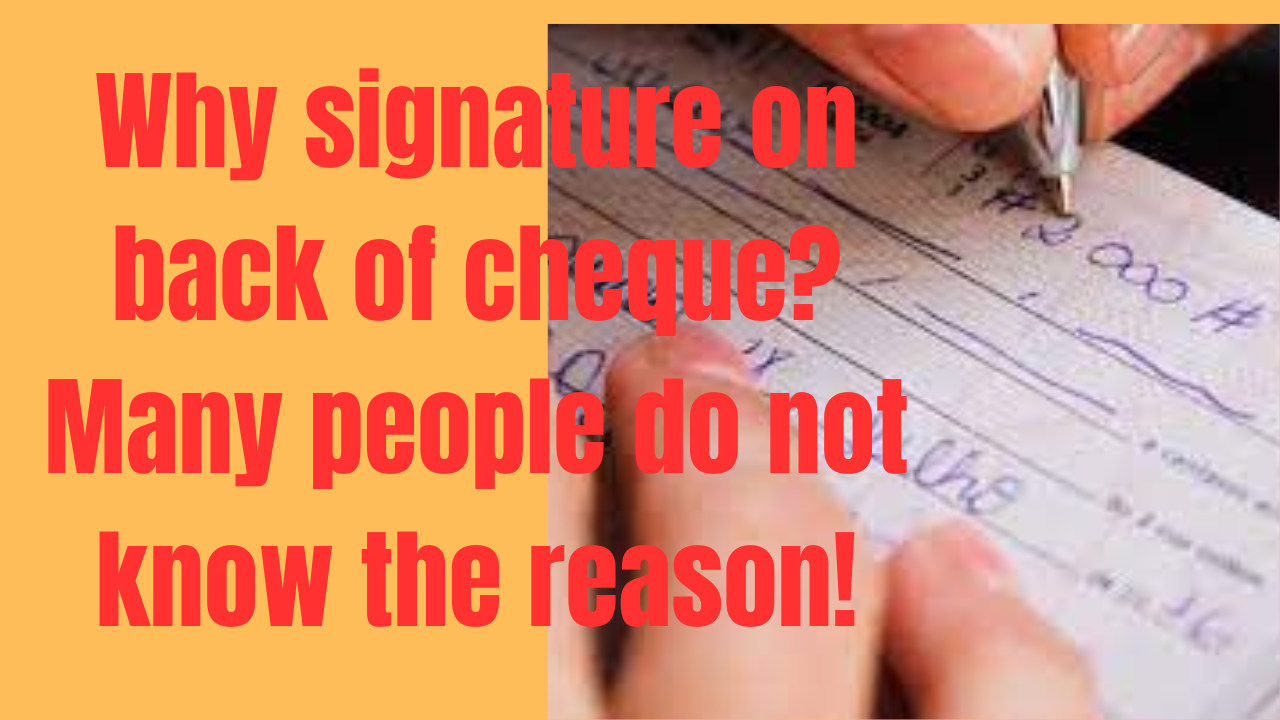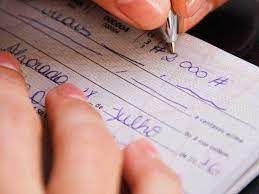Visitors have accessed this post 129 times.
Why signature on back of cheque? Many people do not know the reason!
If someone finds or steals the bearer check along the way, the money is more likely to be paid to him.
Should an individual happen upon or illicitly acquire a bearer check en route, it becomes increasingly plausible for the funds to be appropriated by the discoverer.
In the current landscape, a plethora of avenues for financial transactions exists. These encompass the withdrawal of funds from accounts through a variety of channels, including ATMs, Net Banking, UPI transactions, and the traditional medium of cheques. While certain banks offer the convenience of a direct withdrawal mechanism, others necessitate a physical visit to their premises to facilitate collection, often involving processes such as challans or cheque-based transactions.
In the process of utilizing cheques for monetary transactions, it is a customary practice for cashiers to solicit signatures on both the front and reverse sides of the cheque. This recurrent request often leaves individuals puzzled, as they question the rationale behind appending a signature to the back of the cheque when the front already bears the issuer’s autograph.
Parallely, it is important to note that the reverse side of cheques does not uniformly bear signatures. A prevalent lack of awareness surrounds the determination of which cheques mandate signatures on their back. Addressing this knowledge gap constitutes the focus of our present discussion, accompanied by an exploration of the implications arising from the omission of such a signature.
Primarily, attention should be directed towards the practice of endorsing the reverse side of a cheque, particularly in the context of a Bearer Cheque. This form of cheque is characterized by the necessity of a signature on its back, a distinct attribute when compared to Order Cheques. A Bearer Cheque possesses the unique characteristic of being redeemable at a bank by any individual in possession of it. This stands in stark contrast to other types of cheques, where the recipient must match the name specified on the cheque.
Conversely, an Order Cheque operates under a more rigid framework. Under this mechanism, payment is exclusively disbursed to the individual whose name is explicitly indicated on the cheque. Furthermore, the recipient of the funds is required to be physically present at the bank for the transaction to be processed. This stringent verification process obviates the necessity for a signature on the back of an Order Cheque. Prior to the release of funds against such a cheque, meticulous scrutiny is undertaken by bank personnel to verify the identity of the presenter, thereby ensuring the accurate disbursement of funds.
However, a pertinent scenario unfolds when a bearer cheque is misplaced, stolen, or otherwise falls into unauthorized hands. Under such circumstances, there exists a heightened probability that the individual in possession of the cheque might attempt to encash it. This situation raises potential concerns and queries for the bank, especially if the initial bearer is not the one seeking redemption. To mitigate these uncertainties, a recommended approach is to encourage the bearer to endorse the back of the cheque. This act signifies their acknowledgment of assuming responsibility for the funds and absolves the bank of liability in the event of an inadvertent transaction.
In instances where the cheque’s value exceeds 50,000 rupees, banks often adopt a cautious stance by requesting additional documentation, such as proof of address, from the individual intending to withdraw the funds. This additional layer of verification serves to ensure the legitimacy of the transaction before funds are disbursed. Moreover, the significance of the signature on the front side of the cheque is equivalent to that of the back. In cases where an individual refuses to provide a signature, they have the option to accompany their refusal with a formal application seeking personal receipt of the funds.
Similarly, not all checks are signed on the back. We don’t have a lot of awareness about which check needs to be signed on the back. We are going to talk about that now. We also tell you what will happen if you don’t sign.
To recapitulate, the practice of signing the reverse side of an Order Cheque is non-obligatory. Furthermore, when withdrawing funds from one’s own account via cheque, a signature on the reverse side of a bearer cheque is not mandatory. The imperative for a reverse-side signature arises exclusively when a third party, acting on the behalf of another, seeks to withdraw funds using a bearer cheque.
In conclusion, the intricacies of cheque endorsements unveil a dualistic nature within the realm of financial transactions. Bearer Cheques exemplify financial flexibility, allowing anyone in possession to claim the funds, while Order Cheques prioritize security, ensuring that only the designated individual can access the funds. Armed with a comprehensive understanding of these signature requisites, individuals can navigate the landscape of financial transactions with enhanced awareness and insight.



